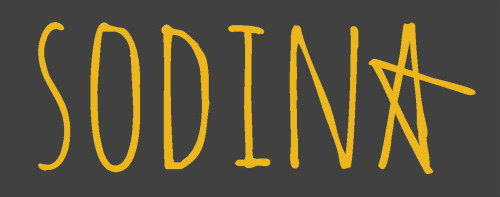 We are being swallowed by a culture of fear as our sense of safety and security erodes every day. How will this fear affect our younger generation and the prospects for our country? What can we do about it?
We are being swallowed by a culture of fear as our sense of safety and security erodes every day. How will this fear affect our younger generation and the prospects for our country? What can we do about it?
I settled into my seat last Sunday, days before Regal Cinema’s announcement to check moviegoer’s bags. I checked the locations of the exits in case of an emergency. I know my wife was doing the same. I wondered if my 15 years olds were too or if they were as anxious as I was. Were they looking at the people already seated and the ones coming in, as I was? I’d hoped not, I hoped they were just looking forward to the movie at our local AMC Theater. The announcements started with scenes of the silly animated red characters and accompanying voice-over, “please silence your phones, don’t use your phone to text, and don’t talk as this will distract others.” But then the usual cartoon animation of colliding cows riding in cars stopped, where the voice-over used to say ‘in the event of a cow collision or emergency, please walk to nearest exit…’ The animated scene had been replaced by bold red text and I’m paraphrasing here, to “be aware of suspicious people, if you see someone suspicious, notify the staff.” It continued with “in the case of an emergency walk to the nearest exit and once outside, move as far away as possible.” Being told to walk to the nearest exit and moving far away (also new instructions at least in the last year), has taken on an entirely different meaning since the Aurora, and Lafayette theater shootings and an axe attack in Tennessee.
Maybe we can expect the next version of the movie theater message to sound similar to airplane crash procedures, “In the event of an active shooter, your seat-back can be removed and used as a bullet-proof shield.”
Have these growing active shooter incidents seeped into our kids’ conscience and do they fear the world a little more every day? My kids were in lock down as was my wife during the Sandy Hook massacre. They were 12 then, how has their perception of our country developed? Since then, there have been suicides in town, some close to our family. The 24/7 news cycle and Facebook feeds highlight the killing of unarmed black men, shootings in churches, recruitment centers, military bases, college deaths by suicide due to pressures to achieve, accidental deaths involving children getting their hands on unsecured guns. Will our kids reminisce about the good ole days when they could just walk into a movie, school, the mall or church without having to go through a metal detector? Those were the days.
According to the CDC’s Fatal Injury Report, in 2013, more than 41,000 people died by suicide plus another 16,000 homicides. What kind of a country will it be 15, 30 years from now? Will people be afraid to go anywhere (as some do in our urban environments today)? What will be the state of our collective brain health be and what will the suicide rate be?
If there is any silver lining in all of this, there are plenty of ways for people to get involved. There are many factors that lead to violent deaths which includes dying by suicide. If you are not one of the more than 234 million voting age adults that will question and pressure our elected leaders for reasonable safety laws like background checks for everyone while respecting people’s 2nd amendment rights, there are other options. You can look into brain health and take a mental health first aid course to be able to spot the signs when someone might be in crisis. Some organizations offer these at no cost. Before you let your kids play somewhere, ask the other parents if there’s a gun in their house and is it secured? If you have adolescents or anyone in the house with a brain illness, be a responsible gun owner and secure your guns. You can support work to interrupt violence, institute restorative justice or look for ways to help break the cycle of poverty wherever it exists. You can investigate anti-bullying programs and see if you can institute one in your community. You can join a community organization that fosters connectedness.
Don’t wait until violence impacts you, your family, friends or community to do something. Many advocates who are trying to save lives are survivors to victims of violence. Ask them why they do what they do and you’ll likely here one or more of these three answers: “It’s my way of dealing with the loss”, “I don’t want my loved one’s death to be in vain” or “I don’t want anyone else to have to experience this”.
You don’t want to wish you’d done something like many of us do after the fact. Be proactive, do something to make this a safer, and better country for you, your kids, and your neighbors. As John F. Kennedy said “One person can make a difference, and everyone should try.”
It’s not too late to make changes that will allow us and our children to feel safe when going to the movies, mall, school, church or around the corner.
At the end of the day, we’re all just human beings trying to live the safest and best lives we can.
The Sodina Project shares stories to foster connection and save lives. This grass-roots movement needs your help in connecting with others. Please share the stories and blog posts with your friends and social networks if they have moved you or made you reflective. You will find sharing options at the end of each post.
Sodina | Voices to Stop Violence
#Sodina | #Voicestostopviolence







Leave a Comment